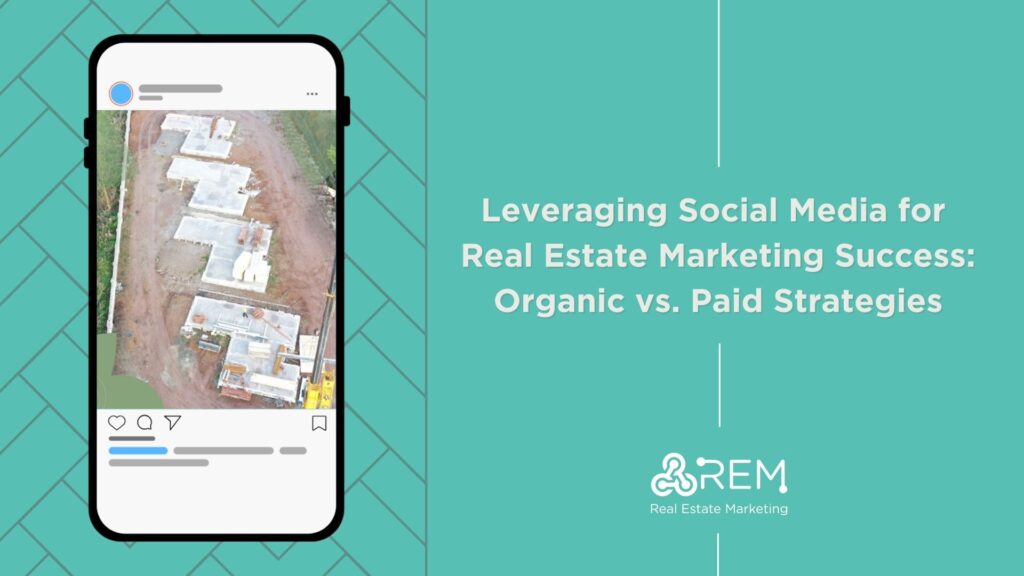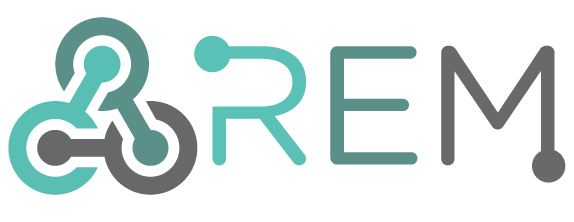
Leveraging Social Media for Real Estate Success: Organic vs. Paid Strategies
In today’s digital landscape, social media has become an essential tool for real estate marketing. From showcasing new developments to generating qualified leads, a well-executed social media strategy can significantly impact a property’s success. At R.E.M. Real Estate Marketing, we’ve seen firsthand how the right blend of organic content and paid advertising can drive remarkable results, including selling out entire developments before construction even begins. In this blog post, we’ll explore the benefits and best practices of combining organic social media content with targeted paid ads, offering valuable insights for estate agents and property developers looking to make the most of their marketing efforts.
Why Social Media Matters in Real Estate Marketing
Social media platforms like Facebook, Instagram, and LinkedIn have transformed the way real estate is marketed. They offer a powerful way to reach potential buyers, showcase properties, and build client relationships. The real advantage lies in their dual capability: organic content allows you to tell your brand’s story and engage with your audience authentically, while paid ads offer targeted reach and measurable results. Together, they form a robust strategy that can maximise exposure, generate quality leads, and ultimately boost sales.
Organic Content: Building a Connection and Showcasing Lifestyle
Organic social media content is the foundation of any good real estate marketing strategy. It includes all the posts, photos, videos, and updates you share without paid promotion. The key to successful organic content is to focus on storytelling and consistency, offering a window into what makes your property unique.
1. Showcasing the Development and Lifestyle
When it comes to real estate, it’s not just about the bricks and mortar; it’s about the lifestyle that comes with the property. Organic content provides an excellent opportunity to showcase the best aspects of a development, including the amenities, neighbourhood highlights, and lifestyle features that will resonate with potential buyers. At R.E.M. Real Estate Marketing, we create a series of posts highlighting different aspects of a project—everything from the architectural design to nearby parks, cafes, and schools. This helps to paint a complete picture of what life would be like for someone living there.
Example from R.E.M. Real Estate Marketing: We recently worked on a development where our organic content strategy included a series of posts featuring beautiful drone footage of the area, behind-the-scenes updates during construction, and lifestyle shots showing families enjoying nearby amenities. This approach helped us build anticipation and engagement long before the sales launch, contributing to a successful pre-sale campaign.
2. Building Trust and Engagement
Organic content is also an effective way to build trust with your audience. By consistently sharing valuable information and updates and engaging directly with potential buyers, you create a sense of community and establish your brand as a reliable source of real estate insights. This is particularly important in a market where buyers make significant financial decisions and need to feel confident about the property and the people behind it.
3. The Role of Video and Virtual Tours
Incorporating video content and virtual tours into your organic strategy can significantly boost engagement. Platforms like Instagram and Facebook prioritise video content, making it an excellent way to increase visibility. At R.E.M., we often create short video clips or virtual tours showcasing the interiors of a new development, allowing potential buyers to experience the property from the comfort of their own home. These types of posts tend to generate high engagement rates, helping to build excitement and drive inquiries.
Paid Advertising: Reaching the Right Audience with Precision
While organic content builds a connection with your audience, paid social media advertising allows you to reach a broader, targeted audience quickly. With paid ads, you can place your property in front of potential buyers based on specific criteria, such as location, age, interests, and even recent online behavior. This level of targeting ensures that your ads are seen by people who are most likely to be interested in your development, maximising your return on investment.
1. Targeting Capabilities of Social Media Advertising
The targeting capabilities of social media platforms are one of the biggest advantages of paid advertising. Using data and insights, we can create highly targeted ad campaigns that reach specific demographics. For instance, if we’re promoting a family-friendly development, we might target ads toward users who have expressed interest in family activities, local schools, or suburban living. Alternatively, for a high-end, luxury development, we can focus on users who have shown interest in luxury travel, high-end fashion, or premium real estate.
Example from R.E.M. Real Estate Marketing: For a recent project, we used Facebook’s advanced targeting features to reach first-time homebuyers in the local area. By combining detailed targeting with engaging ad creative, we generated a steady stream of quality leads for the estate agents to follow up on, ultimately contributing to a successful sales launch.
2. Retargeting: Keeping Your Brand Top of Mind
Another powerful feature of paid social media advertising is retargeting. Retargeting allows you to show ads to users who have previously interacted with your website or social media content but haven’t yet taken the next step. This helps to keep your development top of mind and encourages potential buyers to return and make an inquiry. At R.E.M., we use retargeting to nurture leads throughout the buyer journey, from the initial interest phase to the final decision-making process.
3. Measuring Success with Paid Ads
One of the greatest benefits of paid social media advertising is the ability to track and measure the performance of your campaigns. Platforms like Facebook Ads Manager and Instagram Insights provide detailed analytics, allowing us to see how many people saw the ad, clicked through to the website, and converted into leads. This data-driven approach ensures that we can continually optimise the ads for the best possible results.
Combining Organic and Paid Strategies for Maximum Impact
While both organic content and paid ads are effective on their own, the real magic happens when you combine the two. By leveraging organic content to build a strong, authentic presence and using paid ads to target specific audiences, you create a holistic strategy that maximises your reach and impact.
Example of R.E.M.’s Success: For one of our recent projects, we used a combination of organic lifestyle content and a series of targeted paid ads to generate buzz around the development. Our organic posts showcased the lifestyle benefits and unique selling points of the property, while our paid ads targeted specific buyer segments with compelling calls-to-action. This dual approach helped us generate significant engagement, resulting in high-quality leads and a sold-out development before construction was completed.
Conclusion
In real estate marketing, a well-balanced social media strategy that includes both organic content and paid advertising is essential for success. Organic content allows you to connect with your audience authentically and showcase the lifestyle associated with your developments, while paid ads offer precision targeting and measurable results. At R.E.M. Real Estate Marketing, we have a proven track record of leveraging both strategies to drive exceptional outcomes for our clients, generating leads, building engagement, and achieving sales success even before construction begins.
If you’re ready to elevate your social media marketing strategy and see real results, contact R.E.M. Real Estate Marketing today. Let’s turn your next development into a sold-out success story.
📧 – gavin@realestatemarketing.ie
☎️ – (021) 239 0600
